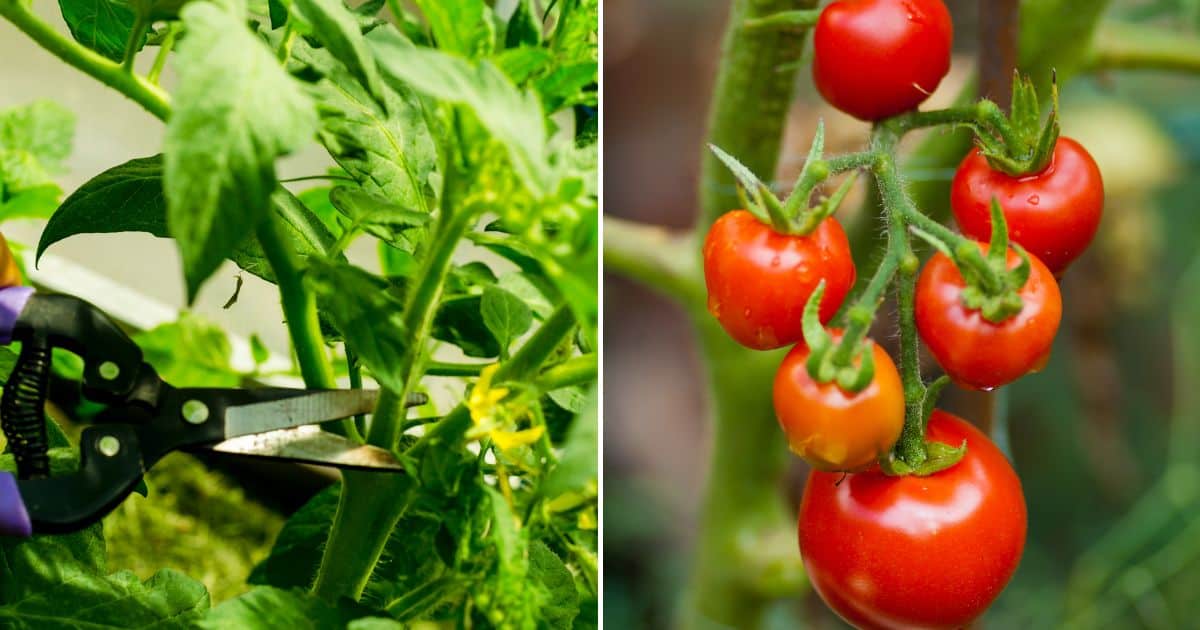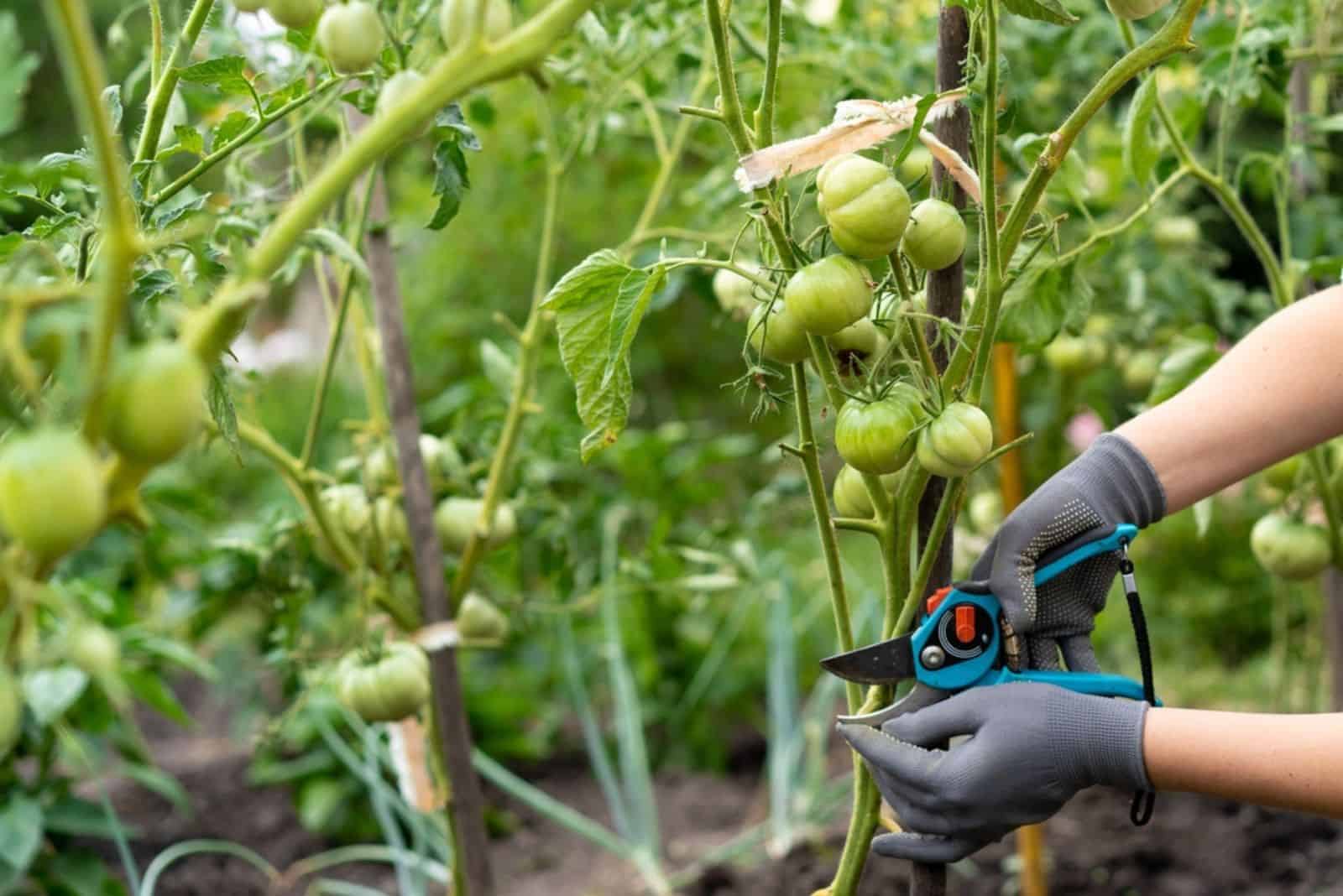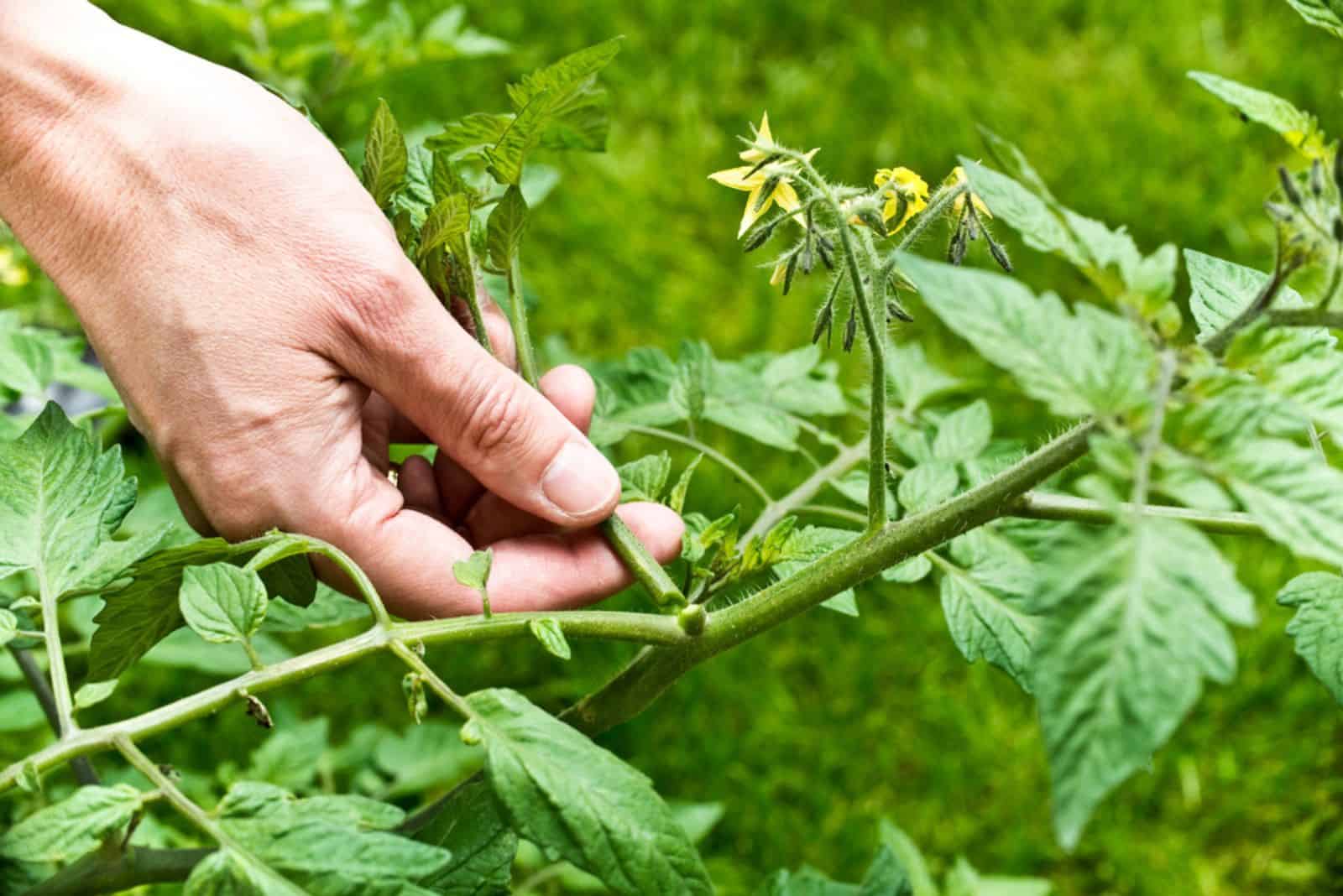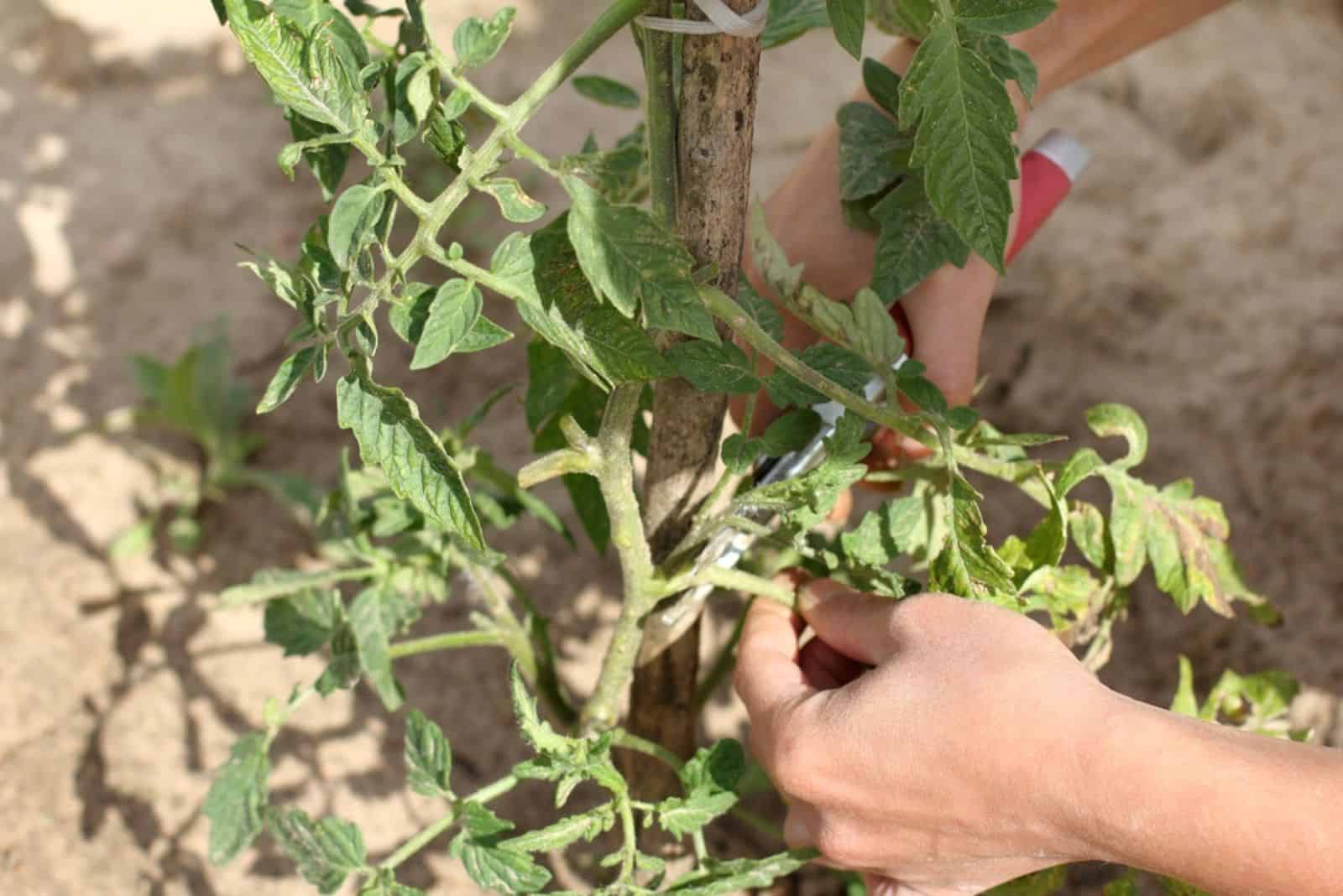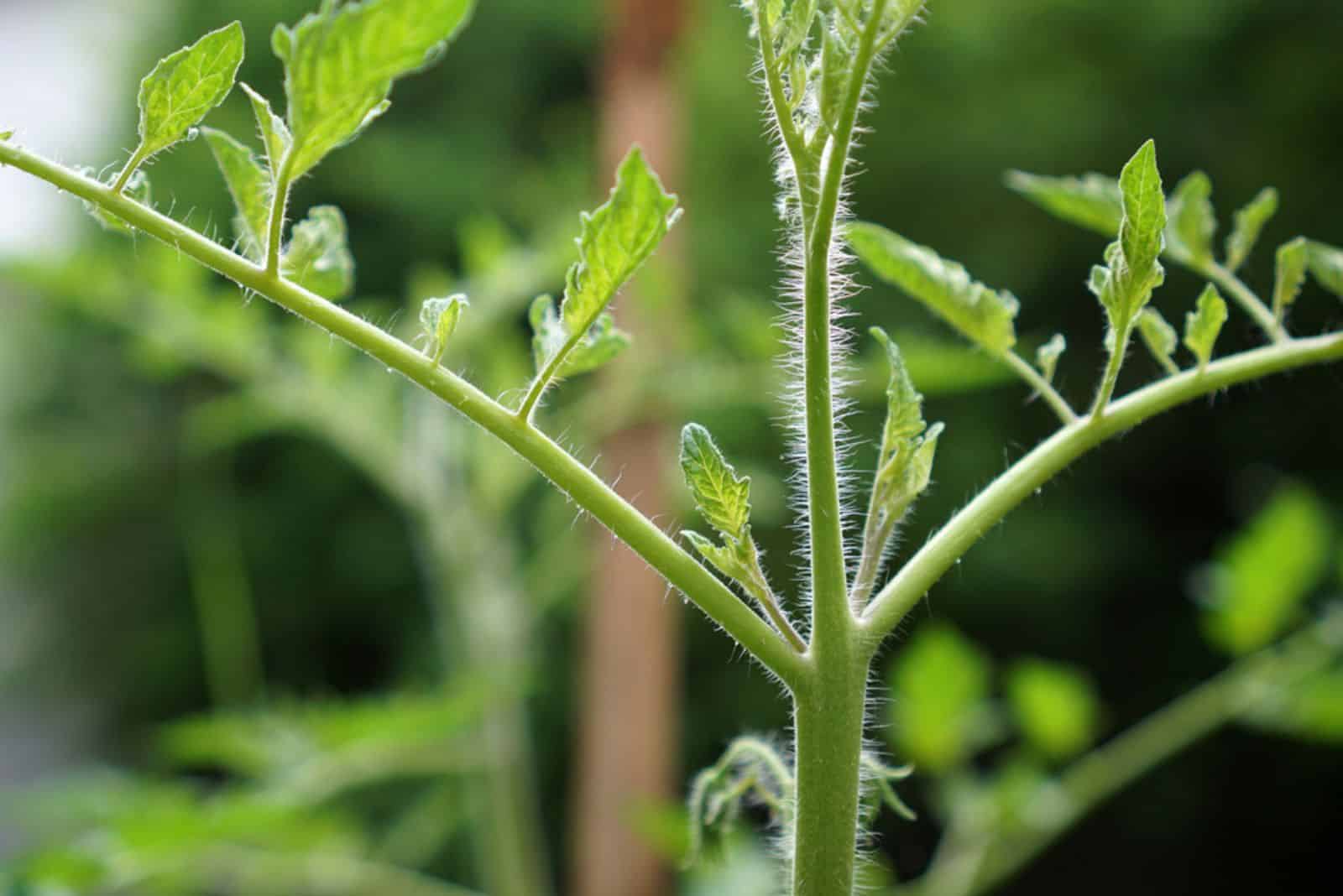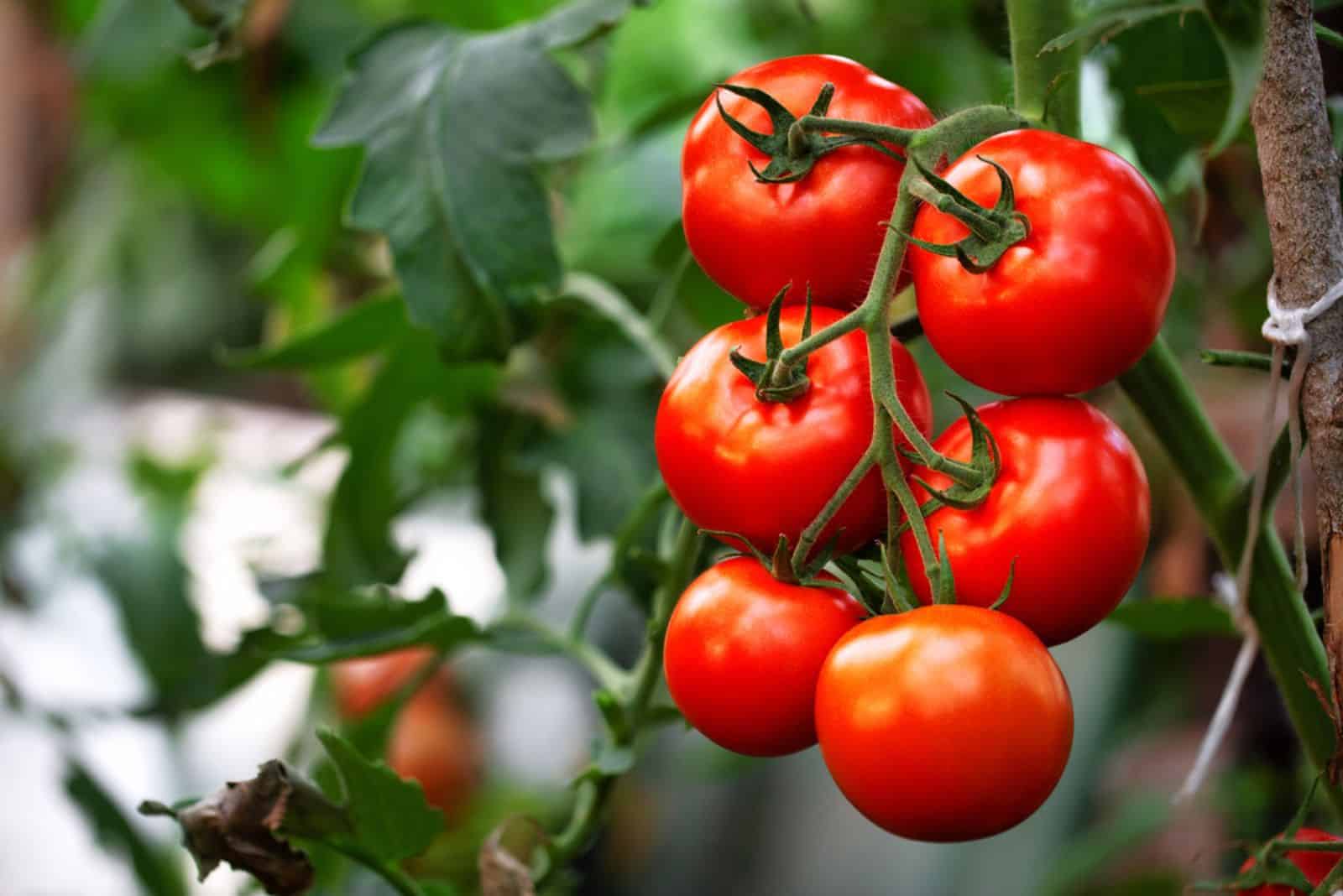Growing tomato plants is quite easy. All you have to do is make sure that they receive a lot of sunlight and nutrients during the growing season. However, tomatoes can quickly become unwieldy, with sprawling branches and an abundance of foliage that can make it difficult to pick ripe fruit.
Pruning your tomato plants is a simple and effective way to improve their overall health, increase crop yield, and make sure that they remain manageable throughout the growing season.
In this article, we are going to cover the benefits of pruning and also look at the best way to do so, so be sure to keep reading!
Is Pruning Tomatoes Really Important?
It depends on who you ask. Some gardeners grow healthy tomatoes every season without pruning them at all. While these plants can grow just fine without pruning, it still doesn’t mean that you shouldn’t prune them.
If you want to have a neat-looking garden like I do, then pruning your tomato plants is a must, especially because they can get tangled and messy.
Getting rid of dense leaf growth promotes better air circulation and sunlight penetration, which can prevent the development of plant diseases.
This can also redirect the plant’s energy to produce the sweetest tomatoes instead of growing dense foliage.
Damaged branches and leaves should be removed to prevent the spread of diseases or pests. Soil-borne diseases can be prevented by trimming parts of the plant that touch the ground, or by staking them.
Figure Out Your Tomato Type (Determinate vs Indeterminate)
Before we dive into pruning technicalities, it is crucial to know what type of tomato you are dealing with. Generally speaking, there are two types of tomatoes: determinate and indeterminate.
Indeterminate tomato plants continue to develop and produce fruit throughout the season until frost kills them, whereas determinate tomato plants reach a particular height (often 3 to 4 feet) and then stop growing.
Determinate tomato plants are good for container gardening or small gardens because they are typically bushier and more compact. On the other hand, indeterminate tomato plants can reach heights of up to 10 feet or more and need staking or trellising to support their sprawling vines.
Due to their naturally more restricted growth, determinate tomato plants typically require less pruning than indeterminate ones. However, indeterminate tomato plants benefit from routine pruning to control their size, enhance airflow, and increase fruit production.
Pruning Determinate Tomatoes
As we mentioned, determinate tomatoes need less pruning. Since they have a shorter growing season and stop growing when they reach a particular height, these plants won’t require trimming to control their growth.
Still, there are certain situations where even these types need to be pruned.
Let’s take a closer look!
1. Damaged Stems Should Be Removed
Carefully observe your plant. Any damaged stems, yellow leaves, weird spots on the plant, or wilting are signs that there is something wrong. You should be especially alarmed if you see any brown spots on the stems and leaves.
These affected areas should be trimmed off in order to prevent the infection from spreading to other parts of the plant or plants that are growing nearby.
Carefully dispose of the pruned parts of the plant and try to figure out what issue you might be dealing with. If it’s a fungal infection or pest infestation, you might need fungicide or pesticide.
2. Prune Suckers Below The Flower Bud
When growing determinate tomatoes, the most important thing is to remove the suckers, specifically the suckers below the first flower bud. This is because they deplete the plant’s energy.
Any sucker pruned above the flower bud will reduce your yield.
Suckers are 45 degree angled stems that emerge from the axel between the main stem and a horizontal stem. They can develop into ordinary branches with the capacity to bear fruit if left unattended.
Early suckers can be easily removed with a simple finger pinch. Pruning shears must be used to cut through thicker stems in order to promote quick wound healing.
We only remove specific suckers because their removal will improve airflow. Determinate tomatoes don’t grow as tall as other varieties and have a short growing season.
3. Cut Stems In Contact With Soil
You must trim any parts of the plant that are in direct contact with the soil. These are usually low-growing stems around the base of the plant.
These stems can act as a bridge for soil-borne pests that will devour your delicious tomatoes. It can also lead to rotting because of moisture in the topsoil layer.
You can either cut them at their bases or tie them to the support if they are not already damaged. This also applies to leaves that might have grown on the stems.
Pruning Indeterminate Tomatoes
While determinate tomatoes need occasional pruning, indeterminate tomatoes have unlimited growth potential and can become quite large if left unpruned.
To keep them under control and encourage healthy fruit production, regular pruning is necessary.
We’ll analyze some of the best pruning methods down below.
1. Remove Damaged/Yellow Branches
Any damaged or yellow branches will deprive your tomatoes of energy that could be used to produce fruit by branches that are underperforming, damaged, or diseased. These areas make the plant weak and more susceptible to pests and diseases.
Even if you leave them on the plant, they will either wilt or lead to unhealthy fruit production.
Begin by inspecting your tomato plant for any damaged, yellow, or diseased branches. Pay close attention to the plant over the course of the next few days or weeks if you’re removing damaged stems. This is so you can spot any symptoms of disease early and take action before it takes over the entire plant.
2. The Suckers Should Be Removed
Indeterminate tomato plants can produce several suckers during the growing season. These suckers develop into new branches that compete with the main stem for nutrients and water, resulting in reduced fruit production.
Therefore, it’s best to get rid of some as soon as they start to appear in order to manage the density and redirect energy to fruit production.
You can leave some to develop into new branches, but don’t leave too many because then you will end up with fewer tomatoes. You can pinch them off or use clean scissors to remove them.
3. Get Rid Of Dense Leaf Growth
I’m sure you’d be happy to see that your tomato plants are growing quickly; however, too much growth is not always a good thing.
In perfect growing conditions, your tomatoes will keep on growing and growing.
This will ultimately lead to overly dense leaf growth, which can prevent normal air flow and sunlight penetration. To prevent this, a few leaves should be removed in order to improve air circulation and avoid fungal infections.
Dense growth can also impede fruit set by casting more shade over the lower portions of the plant. For fruit to form and ripen, sunlight must penetrate the lower leaves and blossoms.
Trim off some of the leaves to allow sunlight to reach lower portions of the plant.
4. Stake Or Prune Low Branches
Due to their unlimited growth, indeterminate tomatoes can become top-heavy, causing the stems to bend or break. This is why staking them is necessary.
You can choose cages, stakes, or any other method that would provide indeterminate tomatoes with support.
No matter what option you choose, there will always be some low-growing branches that are in direct contact with the soil. Pests and fungi can spread through these branches, which is why they need to be pruned or staked.
They don’t even get enough sunlight for fruit production, which is why pruning them is the best idea.
5. Top The Plant
Your indeterminate tomato will grow quite tall and have more blooms towards the end of the growing season. As it grows taller, it may be necessary to “top” the plant by pinching off the tip of the main stem.
This will redirect the plant’s energy towards ripening the final fruits of the season.
Good luck with growing your tomatoes!
Until next time.

